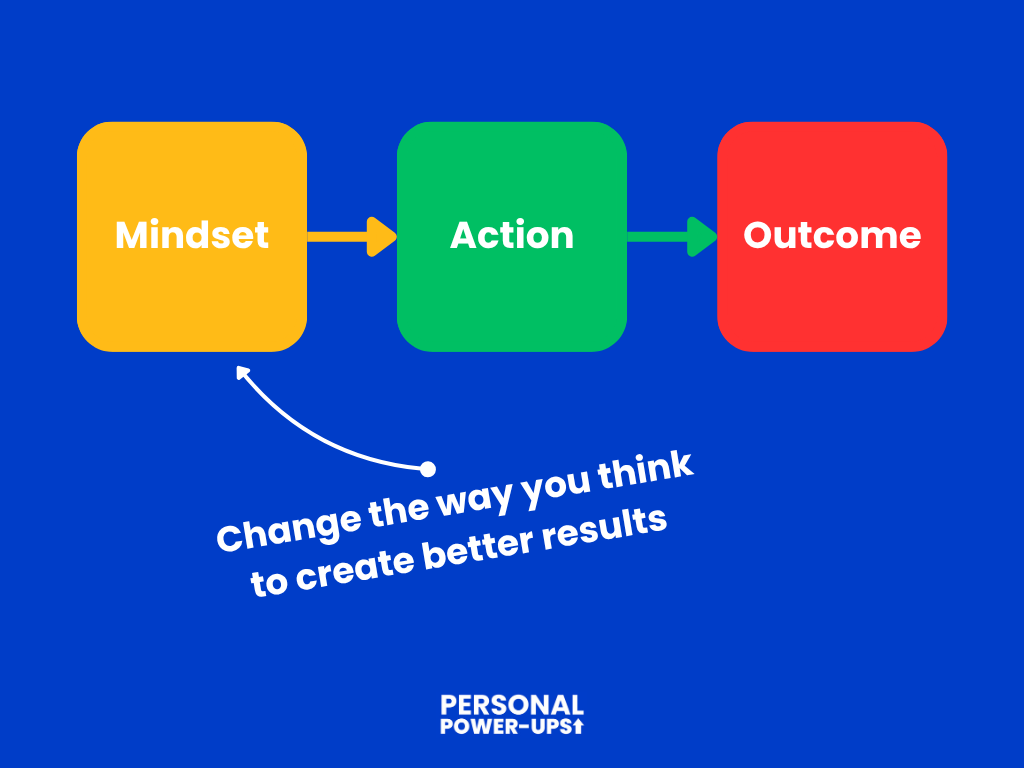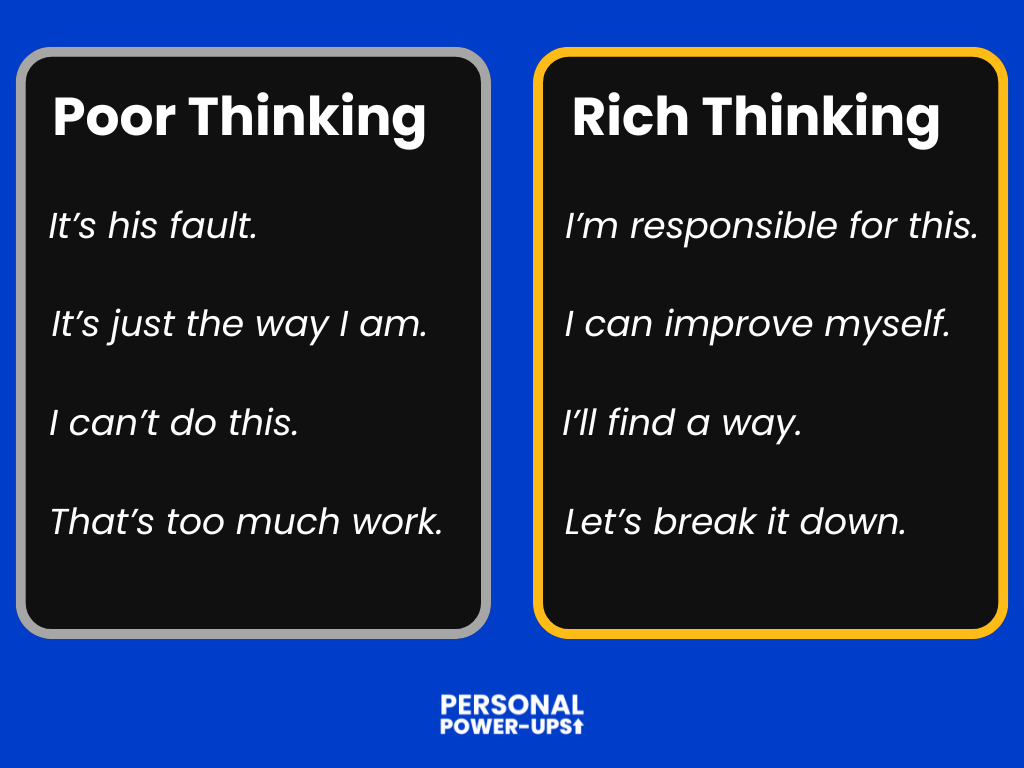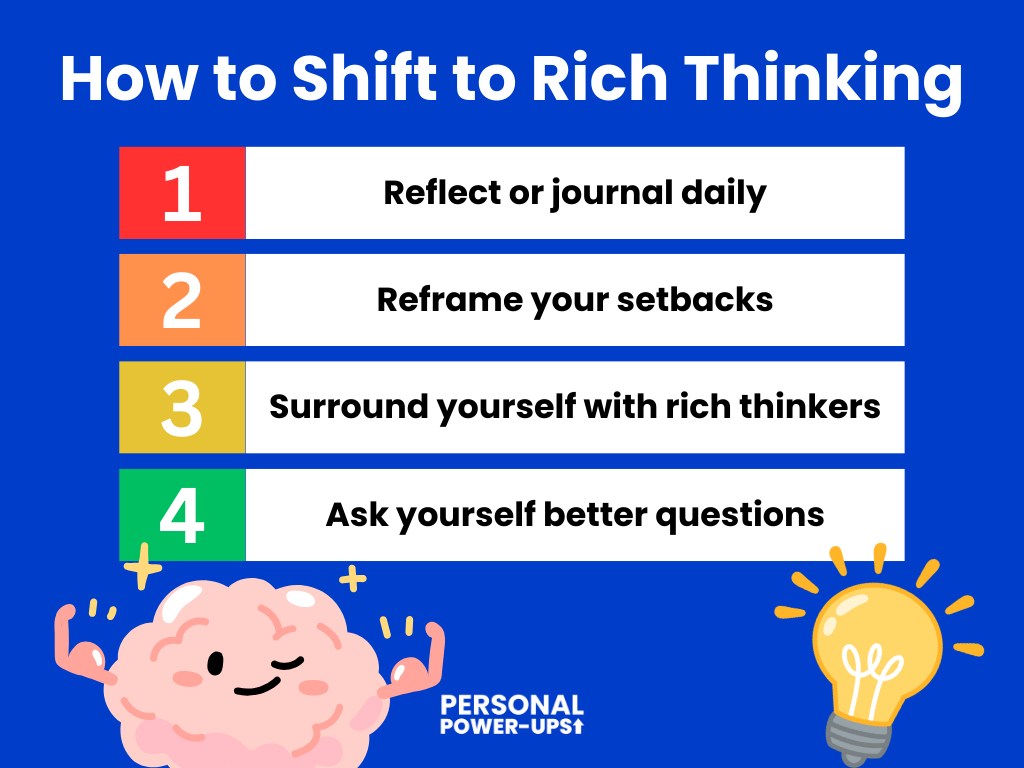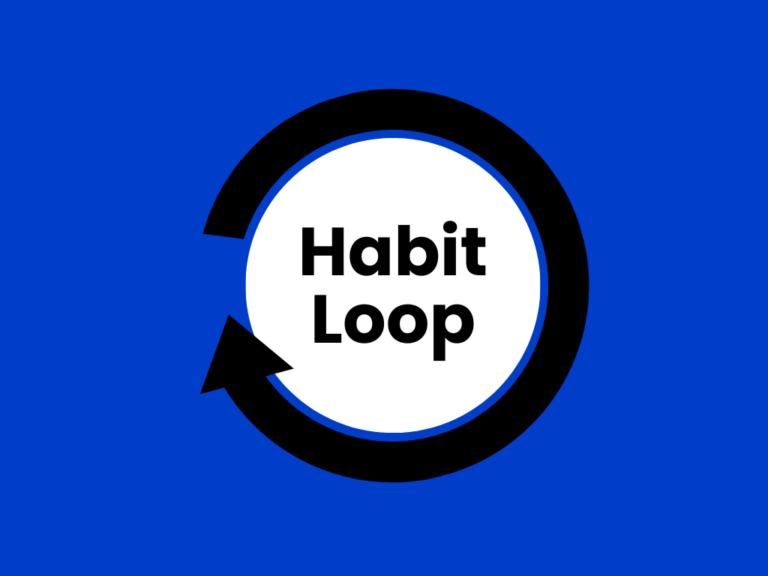The way you think determines the way you live.
Not in a “just manifest it” kind of way, but in a practical, real-world sense. Your thoughts influence your actions, your actions shape your habits, and your habits build your future.
That’s why learning to spot the difference between poor thinking and rich thinking is so powerful. And no, this isn’t just about money and your personal finances. It’s also about the mindsets that shape your decisions, your growth, and your life satisfaction.
In this article, I’ll break down what separates poor thinking from rich thinking, and how to upgrade your thinking.
Contents
Why Mindset Matters
Mindset is the invisible force behind your habits, your choices, and your results.
Two people can have the same goal (say, getting in shape) but get completely different outcomes. Why? Their thinking.
One says, “I always fall off track. I’m just not a disciplined person.”
The other says, “I’ve struggled before, but I can build this up one habit at a time.”
Same starting point, vastly different internal narratives. And that difference shapes their behavior, consistency, and eventual results.
Mindset drives action. Action drives outcome. So if you change the way you think, you change what’s possible.

▼ Ad
Differences Between Poor Thinking & Rich Thinking
Let’s break down the most important contrasts. Use these to reflect on where your current mindset might be helping or holding you back:
| Poor Thinking | Rich Thinking |
|---|---|
| Blames others or circumstances | Takes responsibility |
| Fears failure | Learns from failure |
| Spends for instant gratification | Invests for long-term gain |
| Seeks comfort above all | Seeks growth through discomfort |
| Scarcity: “There’s never enough.” | Abundance: “There’s always more.” |
These aren’t fixed traits. They’re learned habits of thought, which is good news! It means they can be unlearned and replaced.

Why We Fall Into Poor Thinking
Nobody chooses poor thinking on purpose.
It’s often shaped by our environment:
A culture that rewards quick wins and comfort.
School systems that punish mistakes instead of embracing them as learning.
Social media that promotes constant comparison and external validation.
We adopt these patterns without realizing it. Over time, fear and comfort become our default settings, and we don’t even notice we’re stuck in loops like:
“Better play it safe.”
“That’s just how I am.”
“What will people think?”
The danger is that these thoughts feel true, even when they’re not.
▼ Ad
How to Shift from Poor to Rich Thinking
The good news? You can change your mindset, and you don’t need a massive life overhaul to get started.
Mindset shifts happen gradually. They start with small, repeated actions that rewire how you see yourself and the world.
Below are four high-impact habits you can start practicing today. They’re simple, but powerful.
1. Daily Reflection or Journaling
Your thoughts only change if you notice them first. That’s where reflection comes in.
Each day, ask yourself questions like:
“Where did I think small today?”
“When did I act out of fear instead of growth?”
“What did I believe today that held me back?”
A tip is to set a 5-minute timer at the end of your day. Write down one moment where you acted from poor thinking, and one way you could have responded with rich thinking instead.
An example to help you get started:
- Poor thinking: “I’m not qualified enough to apply for that role.”
- Rich thinking: “I might not know everything yet, but I’m capable of learning. I’ll apply and grow through the process.”
2. Reframe Setbacks
Poor thinking sees failure as a stop sign. Rich thinking sees it as feedback.
Reframing is the skill of changing the meaning you give an event.
Instead of: “I failed that presentation. I’m not cut out for this.”
Try: “I learned what didn’t work this time. Now I know what to improve.”
So next time something doesn’t go your way, write down:
What happened?
What did I learn?
How can I use this to grow?
Now, what I like to do is to revisit these notes weekly. You’ll start to see patterns, and it’ll help you view setbacks as stepping stones, not dead ends.
3. Surround Yourself with Rich Thinkers
You absorb the mindset of the people around you, both online and offline.
Poor thinkers love complaining, blaming, and staying stuck. Rich thinkers focus on solutions, learning, and taking responsibility.
I’d recommend you audit your inputs:
Who are you following on social media?
What kind of conversations do you regularly have?
What kind of thinkers do you surround yourself with?
Once you’ve audited your inputs, it’s time to take action:
Follow creators and thinkers who talk about growth, habits, mindset, and resilience.
Join communities (online or in-person) where people are building things, not just consuming.
Your environment becomes your mental default. So build one that supports your goals and steers you toward rich thinking.
4. Ask Yourself Better Questions
Your questions shape your focus. And your focus shapes your outcomes. So put in effort to improve the questions you ask yourself.
Poor thinking asks:
“What if I fail?”
“Why is this happening to me?”
Rich thinking asks:
“What can I learn from this?”
“What would the best version of me do here?”
“How can I grow from this situation?”
So, before any major or hard decision, pause and ask: “What would rich thinking look like in this moment?”
Write that question down. Stick it on your mirror, your phone, your laptop, wherever you need a mental reset.
A concrete example: You’re hesitating to pitch an idea. Poor thinking says, “What if they reject it?” Rich thinking says, “Even if they say no, I’ll gain clarity and feedback. Let’s go.”

Final Thoughts
Here’s the bottom line: Your thoughts shape your habits. Your habits shape your future.
You don’t need to be rich to think richly. The mindset comes first, the results follow. And if you want to get started with making your money work for you, but you don’t know how, be sure to check out our beginner’s guide on investing.
Start your shift to rich thinking by reflecting on your own thoughts with the examples above, and then pick one poor thought you’re going to change the coming days. Good luck!




